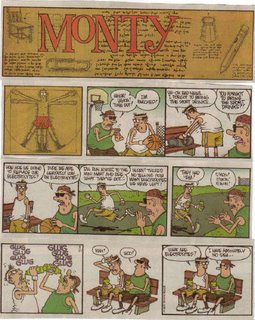Most Read Posts of 2008
The following is a recap of the five most read posts on this blog in the past year. It’s interesting to note that four of these were originally posted in 2007 but continue to be viewed more than the more recent ones. Click on the post title below to visit the original article. In reverse order they are...
#5 – Biomac Shoes. This was posted to my blog in 2007 not too long after #1 (below) was posted. It is related to the midsole cleat topic discussed in the #1 read post and because of that relationship continues to draw readers. This a German-made cycling shoe that is extremely light and also incorporates an arch cleat. I learned of midsole cleats from the maker of Biomacs—Goetz Heine. He actually flew from Europe to Phoenix to show me the shoe and cleat position in 2006. At first I was skeptical, as are most people I talk with about midsole cleats. And with good reason: Changes to age-old practices should not be accepted at face value and must be carefully evaluated.
#4 – Road Bike Posture. This was also a post from 2007 in which I suggested that roadies should sit on the saddle with their hips rolled forward. This is a bit hard to explain but the post’s accompanying pictures illustrate the idea pretty well. I go on to suggest that the best way to achieve this position is to get a bike fit from a professional fitter and to make sure that you have a saddle that is right for you. This latter is a real challenge. You can go through a lot of saddles trying to find one that feels right. I might add that I’ve known many very good riders who don’t sit on the saddle as I propose here. But being a “bar stool sitter” makes it more difficult to be fast, I believe.
#3 – Active Spokes. This is the only blog post from 2008 to make the top 5 most read. This one is about an invention an Ironman triathlete came up with that would allow a wheel to automatically change from light rim to heavy rim while in a race or workout. In the piece I explain that a light rim is advantageous for climbing and accelerating, but that a heavy rim works better on a flat course or descent. The pictures that accompany the post show a simple device that moves weights on the spokes from the hub to the rim when high speeds are reached. And they can be customized to different courses and speeds. But talk about a hard sell! As athletes we are firmly convinced that light wheels are best for all situations. It’s not easy to change a person’s mind once it is made up.
#2 – Foot Strike in Running. This dates to March 18, 2007 and gets a surprising number of hits for such a brief discussion. In it I suggest that a flat or mid-foot landing while running is preferable to landing on the heels. I’ve actually softened my position on this issue just a little bit since first writing this. Then I said that any time the heel touched the pavement before the ball of the foot was unacceptable. Now I believe that if the knee is bent when the heel strikes that this is probably going to work alright for most endurance events. It’s when the knee is locked out straight and the heel strikes first that presents the greatest problem. The footstrike in the top picture (red shoes) on this post is really not too bad. This year I wrote a follow up to this topic which showed this knee-locked, extreme-heel-strike technique so common with many runners.
#1 – Cleat Position. Interestingly, this was the first piece I ever posted on my blog back in January of 2007 and has always generated a lot of visitors. The gist of the post was about how I had changed to a midsole cleat position the previous year and found it to be more economical than the traditional cleat position under the ball of the foot. As an update, I continue to ride this way and can’t imagine ever going back. Most of the athletes I’ve coached in the last two years still mount their cleats midsole and agree with my experience. I continue to get questions from athletes about the nuances of making such a change. But for some reason it tends to make a few athletes angry that I would propose such an extreme thing. For some reason there is an almost religious fervor about where one places his/her cleats on the shoe. This reminds me of the Big Enders and Little Enders in Gulliver’s Travels. They went to war over which end of the egg should be opened first. I never cease to be amazed with people.
I look forward to posting in the coming year what I am thinking about and doing with the athletes I coach. And I hope you al will continue to question me about these things. Thanks for reading and Happy New Year!


